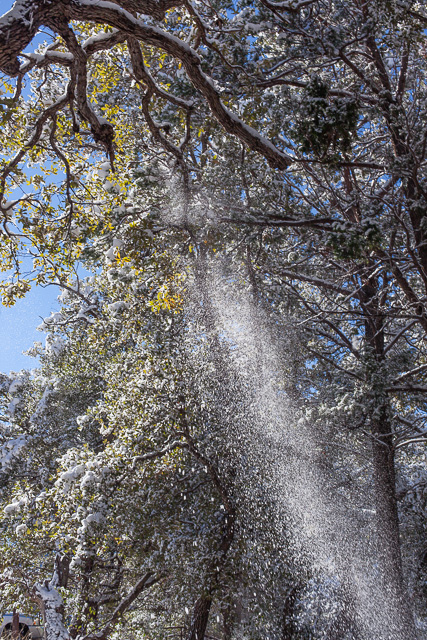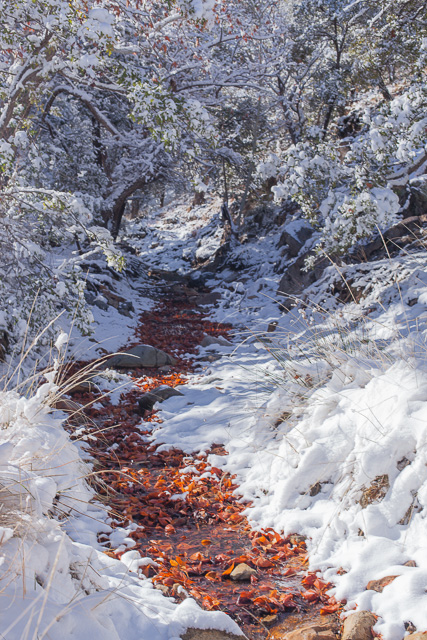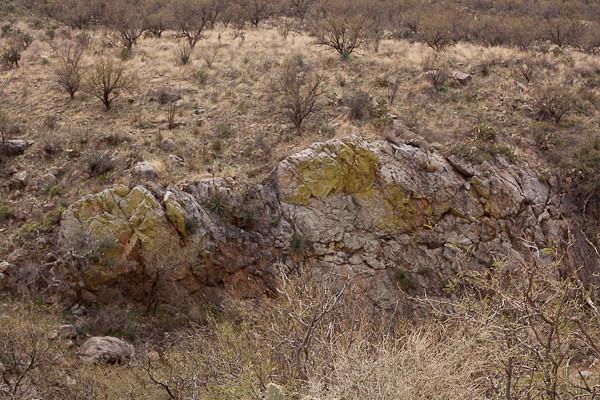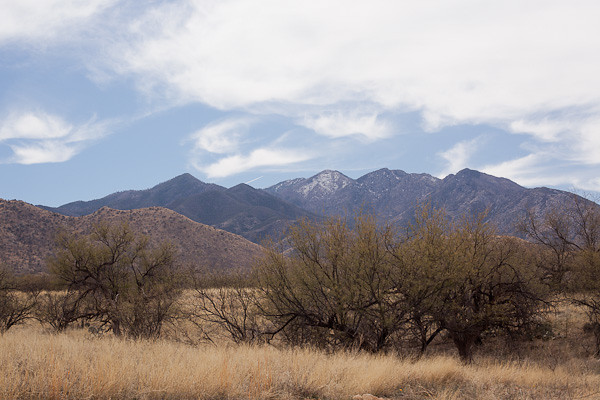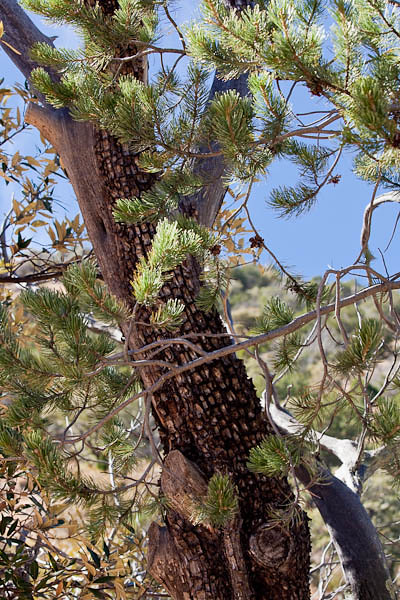In every walk in nature, one receives far more than he seeks. ~ John Muir
Snow in Arizona?
Sure. Arizona has its share of mountain ranges. The state, when viewed from far above, might resemble a piece of brown corrugated cardboard. Mountain ranges alternate with valleys, and those mountains peaks, many which near 10,000 feet in elevation, get plenty of snow.
A couple of days ago the snow moved even further down the mountains, and I headed for the nearest mountain range, the Santa Ritas, and drove towards Madera Canyon. Before I reached the road climbing upwards through the canyon, I saw clumps of wet snow hanging on ironwood trees, acacias, palo verdes. A few cholla had a snowy mitten on every arm. The prickly pear and yucca wore coats of white.
What a sight! it was the first time I’ve seen measurable snow in the foothills, mostly a thornscrub habitat.
In all things of Nature, there is something of the marvelous. ~ Aristotle
As we drove to the higher elevation, several inches of heavy snow covered everything. The wind was breezy and it seemed wherever I walked, the sycamore trees were throwing the snow off their leaves and branches and aiming for me.
The sound of water says what I think. ~ Chuang Tze (c. 360 BC)
When we reached an access area for Madera Creek, I hiked along the creek. Water was flowing amidst a bed of red sycamore leaves. Surrounded by the whitest of snow, the creek seemed more sycamore leaf than tumbling water.
I enjoyed my brief foray into the wintry weather, especially while standing in the rays of the warming sunshine.
————–
Bo Mackison is a photographer and owner of Seeded Earth Studio LLC. Yesterday she traveled to a wintry sky island in southern Arizona to play in the snow. Nature is truly a wonder!

